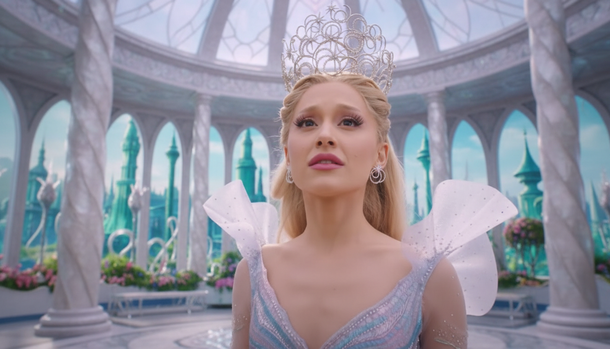How Wicked: For Good Transforms the Broadway Classic With Bold New Twists

Discover how Wicked: For Good reinvents the beloved musical. Explore new songs, deeper character arcs, and surprising plot shifts. Find out what sets the film apart from the stage. Dive into the magic and see what’s changed.
Wicked: For Good reimagines the world of Oz, offering a cinematic experience that both honors and redefines the original Broadway sensation. The film opens with a dynamic medley, weaving together familiar melodies from the first act, but quickly signals its intent to chart a new course. Instead of following the stage version’s structure, the movie delays the pivotal 'Thank Goodness' moment, setting a fresh rhythm for the story’s unfolding drama.
One of the most striking departures is the exploration of Glinda’s early years. Through a vivid flashback, viewers witness her struggle to harness magic at her own birthday celebration. Rather than displaying magical prowess, young Glinda captivates her guests by faking a spell, revealing a knack for performance and persuasion. This glimpse into her formative years adds layers to her character, a narrative thread absent from the stage production.
Music lovers will notice two original songs that expand the emotional landscape. 'No Place Like Home' gives Elphaba a powerful moment to express her commitment to Oz, even as she faces rejection. The song’s intensity is heightened by an unexpected interruption from the Cowardly Lion, adding urgency to her plea. Meanwhile, 'Girl in the Bubble' captures Glinda’s internal conflict as she grapples with the facade she must maintain under the Wizard’s rule. These additions bring fresh emotional depth and are exclusive to the film adaptation.
Significant changes also reshape the story’s approach to Nessarose. In a move designed to avoid outdated stereotypes, the film has Elphaba grant Nessarose the ability to fly, rather than simply walk. The transformation of her shoes from silver to a glowing red not only nods to the iconic 1939 film but also reframes Nessarose’s journey in a more empowering light. This creative decision, championed by the actress portraying Nessarose, marks a thoughtful evolution in the character’s portrayal.
The film’s take on the song 'Wonderful' introduces a new dynamic, bringing Glinda into the dance alongside the Wizard and Elphaba. This trio’s interaction, set against the backdrop of caged animals and a silenced Doctor Dillamond, intensifies the stakes and underscores the consequences of the Wizard’s regime. The visual of Doctor Dillamond, now unable to speak, adds a haunting layer to the narrative that the stage version only hints at.
Romantic tensions reach a new peak as Glinda and Fiyero’s wedding is brought to life on screen. The ceremony, interrupted by a dramatic animal escape orchestrated by Elphaba, propels Fiyero to abandon the wedding and ultimately choose a different path. This sequence, absent from the stage, injects urgency and heartbreak, making the characters’ choices feel more immediate and consequential.
In a final twist, the Grimmerie reveals Glinda’s latent magical abilities, aligning her more closely with the original novels than the musical ever did. This revelation not only redefines her role but also sets the stage for a more empowered future. The film’s closing moments pay homage to its iconic imagery, recreating the memorable scene of Glinda whispering to Elphaba—a visual motif that resonates throughout the movie but never appears in the Broadway show.
Wicked: For Good stands as a bold reinterpretation, blending nostalgia with innovation. Its new songs, reimagined character arcs, and thoughtful plot revisions ensure that even the most devoted fans will find themselves surprised. The film invites audiences to see Oz through a new lens, where familiar faces embark on journeys that feel both timeless and refreshingly new.
#WickedForGood #WickedMovie #Elphaba #Glinda